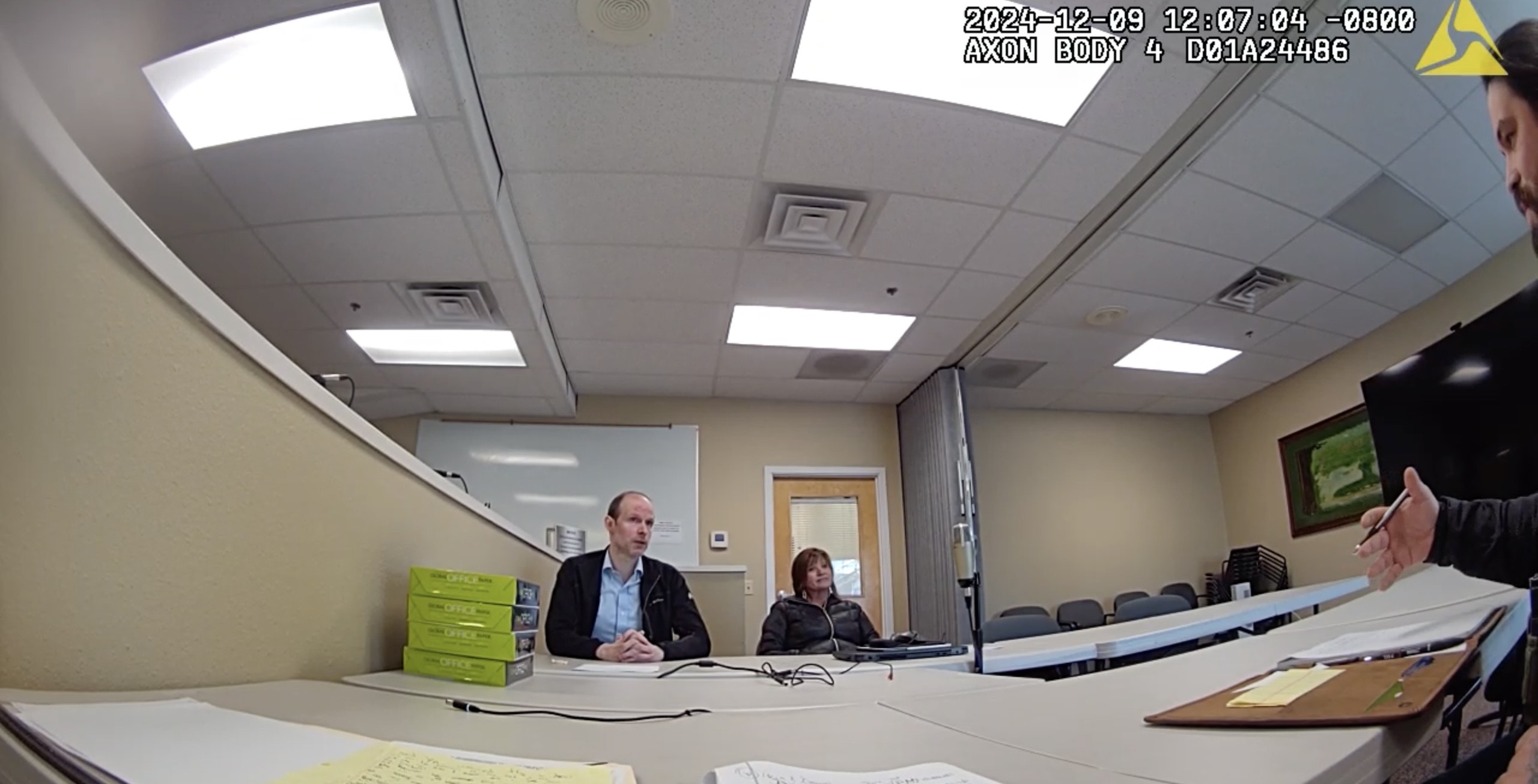Stuntman, director takes pains for success
Published 9:50 am Sunday, June 13, 2021

- Jeff Jensen said he fell in love with the scenery of Wahkiakum County on a trip north from California and has moved his home base. Now retired after a career as a Hollywood stuntman and movie director, he is setting up a foundation to offer job opportunities to disabled military veterans.
CATHLAMET — Call it the stuntman’s curse.
After a successful Hollywood career, standing in for tough guys Sean Connery and Dolph Lundgren, falling off buildings, crashing cars and blowing things up, Jeff Jensen would always do one more stunt.
“It’s difficult to turn down Steven Spielberg,” he laughed. “I should have stopped before I was forced to stop. It’s like being a pro football player for 30 years. Your body is being hammered. It takes a toll. But it’s all relationships and ego.”
Jensen’s stunts appear in movies including Arnold Schwarzenegger’s 1990 sci-fi classic “Total Recall” and “Speed,” the 1994 Sandra Bullock bomb-on-a-bus drama.
But creating thrills for cinema-goers came at a cost. Some 17 surgeries on a misshapen knee that bulges through his jeans, plus ugly burn scars on both his forearms, attest to a life of falling from bikes and buildings or handling flames and explosives.
‘I put my physical well being on the line so they can be safe.’
— Jeff Jensen
Retired stunt man
At 63, he has had to retire.
As he drove his motor home north from California, Jensen parked in Kelso and jumped on his motorcycle. Riding west through Wahkiakum County, he discovered his new home. He described scenic Washington Highway 4 as spectacular.” “I said, ‘I want to live here.’”
Now settled, Jensen is embarked on his new project. He has started a foundation called Soldiers to Cinema, using his Hollywood contacts to train disabled veterans for jobs on movie sets. (See related story.)
Size counts
His story began with a pre-teen boy admiring Steve McQueen in the 1971 motocross documentary “On Any Sunday.” Jensen grew up in California’s Orange County, racing motorcycles and cars through his teens then getting into the construction industry, building homes for such notables as California Angels star Rod Carew.
In Hawaii, he observed Jack Lord’s crew filming “Hawaii 5-0.” “I saw them doing motorcycle stunts and thought, ‘I could do that.’”
Jensen had already earned his Screen Actors Guild credential filming a commercial for Yamaha. He moved to Los Angeles to break into Hollywood.
At 6-5 tall, he had an advantage. “There were three other big guys. The only other guys my size were old cowboys and they’d say, ‘Let the kid do it.’ I was very fortunate and my career took off.”
Learning the trade
Jensen thirsted to learn every aspect. “From Day 1 in the film industry, I was wanting to direct and would like that job,” he said.
He enrolled in the University of Southern California film school. On days when stunts were not required, he returned to the set, observed directors and helped out. His career advanced by earning credentials with the Stuntmen’s Association of Motion Pictures and the Actors Studio in New York.
He savored travel to exotic locales. “I have been on every continent except South America, even under the polar ice cap. The places that they paid me to go! I had the most amazing career. But my injuries caught up with me.”
Early stunt work was on TV shows like “Walker, Texas Ranger,” as well as Chuck Norris’ 1983 movie “Lone Wolf McQuade.” He fell off a seven-story building in “The Fall Guy,” and appeared in episodes of “Falcon Crest,” “Knight Rider” and “Magnum, P.I.” He fought with Jackie Chan on “Cannonball Run 2” in 1984 and Sylvester Stallone in the 1989 “Rambo III” movie, where he was second-unit director. That year he performed stunts in “Indiana Jones and the Last Crusade” with Harrison Ford.
Fighting — or pretending to fight — meant developing eye and hand coordination to effectively “pull punches.”
“The worse thing you can do is hit an actor or hit the camera,” he said. “Fighting is all choreography for the camera. It’s all rehearsing, blocking. It is all a big con.”
On rare occasions where performers actually hit Jensen, he made sure he was paid extra.
Another inside secret is how stunt coordinators plan car chases and crashes. Jensen is amused to reveal how they use tiny “Matchbox” toy cars to help multiple drivers learn their moves before they did the real thing for the rolling camera. “We are creating illusions, we are not crashing,” he said.
Doubling for the stars
Jensen cherishes memories of working with big-name stars, especially those who recognized his skill. “I put my physical well being on the line so they can be safe,” he said. A treasured 1987 snapshot from the set of “The Untouchables” shows Sean Connery and his double — Jensen, with identical costume and mustache. Another shows him with Donald Sutherland, who he describes as “very thoughtful.”
The contrast in scenes ran the gamut. In “Running Man” in 1987 with Schwarzenegger, he was a motorcycle rider who attacked brandishing chainsaws then flew over the handlebars. Doubling for John Goodman in the 1994 “Flintstones” movie, meant wearing a dress when Fred put on a disguise.
One spectacular stunt was for Dolph Lundgren’s 1992 adventure “Universal Soldier.” The scene called for Lundgren’s character to Australian rappel (standing, facing down) 650 feet down the Hoover Dam on the Nevada-Arizona border.
“I wore five layers of gloves,” Jensen said, recalling meticulous preparation that included making sure the rope was long enough. “If I trip and fall, I die. You have to lean out at a 90-degree angle. I did it six times, once with a camera on my head.”
Jensen appeared in three of the “Star Trek” movies, but laments the change to CGI (computer generated images) in many of today’s films. “I love making movies,” he said. “I hate the business of movies,” alluding to how money is wasted, “but I love the process.”
Blowing things up
He worked as second-unit director for several. “We get to blow up all the buildings. We are like the ‘red-haired stepchildren.’ But you have to adapt your style to each director.”
Director Peter Masterson’s 1991 movie “Convicts” was a 1902 period farm drama by Pulitzer-winner Horton Foote starring Robert Duvall and James Earl Jones.
Jensen was filming Duvall ride his horse to his planned mark, then turn. Jensen said he amazed himself by asking Duvall to do it again, but make sure his character appeared to make a conscious decision to change direction. He was relieved when the seasoned actor agreed to the validity of filming a second take.
“It was my first day on the set as a union director!” Jensen laughed.
Other second-unit work included “The Indian Runner” (1991), “Subdown” (1997) and “The Watcher” (2000). He directed and wrote the films “Fallacy” (2004) and “Velocity” (2007). The latter highlighted his love of Moto Grand Prix Championship motorcycle racing. “High Speed,” which he directed in 2002, was a British motorcycle racing drama.
No regrets
Jensen was still racing professionally until about five years ago. A 2009 documentary, “The First Last Race” features his love for racing, despite his injuries. In an online report, an admirer described in gory detail how he fell off his cycle during the grueling Pike’s Peak International Hill Climb, but insisted on riding his BMW down the steep hill with a broken collar bone. “If I crash, I don’t bounce anymore” Jensen quipped.
He isn’t happy with the injuries, but has no real regrets. “I had a life of real adrenalin, racing and then stunt work. Film making is a rush,” he said, lamenting the need to stop. “I was cut off from the drug of adrenalin.”
His father, who died last year, encouraged him. “He taught me to pursue all my dreams. He asked me if I would do it over. The only thing maybe I would start directing full time sooner,” Jensen said.
On one shoot, he knew he was going to need help to continue working so he arranged to visit his orthopedic surgeon between scenes. “I should have stopped doing it,” he said. “But you build relationships and don’t want to let anyone down.”
Satisfaction isn’t the only reward. “It is a lifetime of work that keeps paying off,” Jensen said. Somewhere in Hollywood, a clerk with a calculator determines “residuals” — additional contracted payments each time a film is shown.” Jensen said on one recent night, he turned on his TV and discovered he had eight films being shown. “I just got a stack of 107 residual checks,” he laughed. “One was for 8 cents.”
He teases that if he ever writes his autobiography, the title will be, “Fall down, pick up check. The life of a Hollywood stuntman.”





